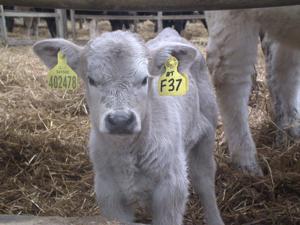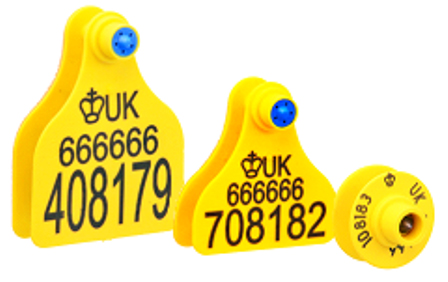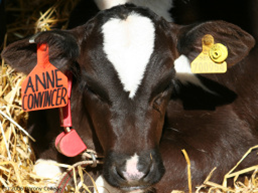Tagging Calves – Top Tips For Successful Tag Application
20 November 2020
Ensuring young calves are tagged correctly is an essential part of the cattle identification system. The tagging rules require young calves to be double tagged with two identically numbered ear tags within 20 days of birth. For dairy calves one ear tag must be applied within 36 hours of birth with the secondary tag applied within 20 days. To avoid confusion and miss mothering calves ideally should be tagged as soon as they are dry. You should always take care when handling cattle but especially when applying ear tags to new born calves. Incidents and fatalities among farmers tagging suckler calves highlight the need for proper and secure handling facilities.
Ensure the calf is properly restrained
It’s important to properly restrain the calf you are about to tag. If possible separate the calf from the cow as a restrained calf is likely to call out to its mother which may result in her aggressively attacking the farmer. Make sure you have suitable handling facilities in place to hold the calf and protect yourself. Calf crates are a good option for use in indoors with calf/cow catchers available for those tagging outside.
If you are trying to restrain the calf, tag it all while watching your back you are likely to administer the tag in the wrong place and or the wrong way around.
Have the tags and tag applicator ready
Before tagging the calf make sure that the tags are ready (you may want to disinfect the tag). Make sure that the tags and tag applicator are clean to avoid the risk of infection. Also make sure that you are using the correct applicator for the tag you are using (different tag companies have different applicator styles). Make sure that the applicator is working correctly. Squeeze the tagger to check the pin slides easily in the hole on the opposite side of the tagger.
Ensuring tags are inserted correctly with the right applicator can reduce the need for replacement ear tags (the average cost for a replacement tag is £3.50 which adds up if a batch of calves loose ear tags due to not being correctly inserted).
Cattle need to be tagged with a primary and secondary tag. Have both tags ready to be inserted.
Inserting the tag
Make sure that the ear/area for tagging is clean. Ideally the tag should be inserted in the middle one-third of the ear. You should be able to see two large veins in the ear. Insert the ear tag between the two. Avoid piercing cartilage ridges as this may result in ear deformities and infection. Properly positioned tags will minimise discomfort for the calf and should last longer in the ear. Ear tags placed too close to the animals head will fit too tightly due to the thicker cartilage whereas tags too far towards the top or bottom of the ear can be easily ripped out.
To insert the tag into the applicator separate the two halves (known as the male and the female) and load them onto either the pin or under the tongue (depending on the make and style of tag you are using). When using plastic tags the female part should be on the inside/front of the ear with the male part entering from the back of the ear. Press the applicator firmly to insert the tag which will be followed by a click as the two tag halves come together. Ensure that the tag is correctly inserted and can move freely around with the tag in a downwards position. The same should be done for the secondary tag in the opposite ear.
Sarah Balfour, sarah.balfour@sac.co.uk
Sign up to the FAS newsletter
Receive updates on news, events and publications from Scotland’s Farm Advisory Service


